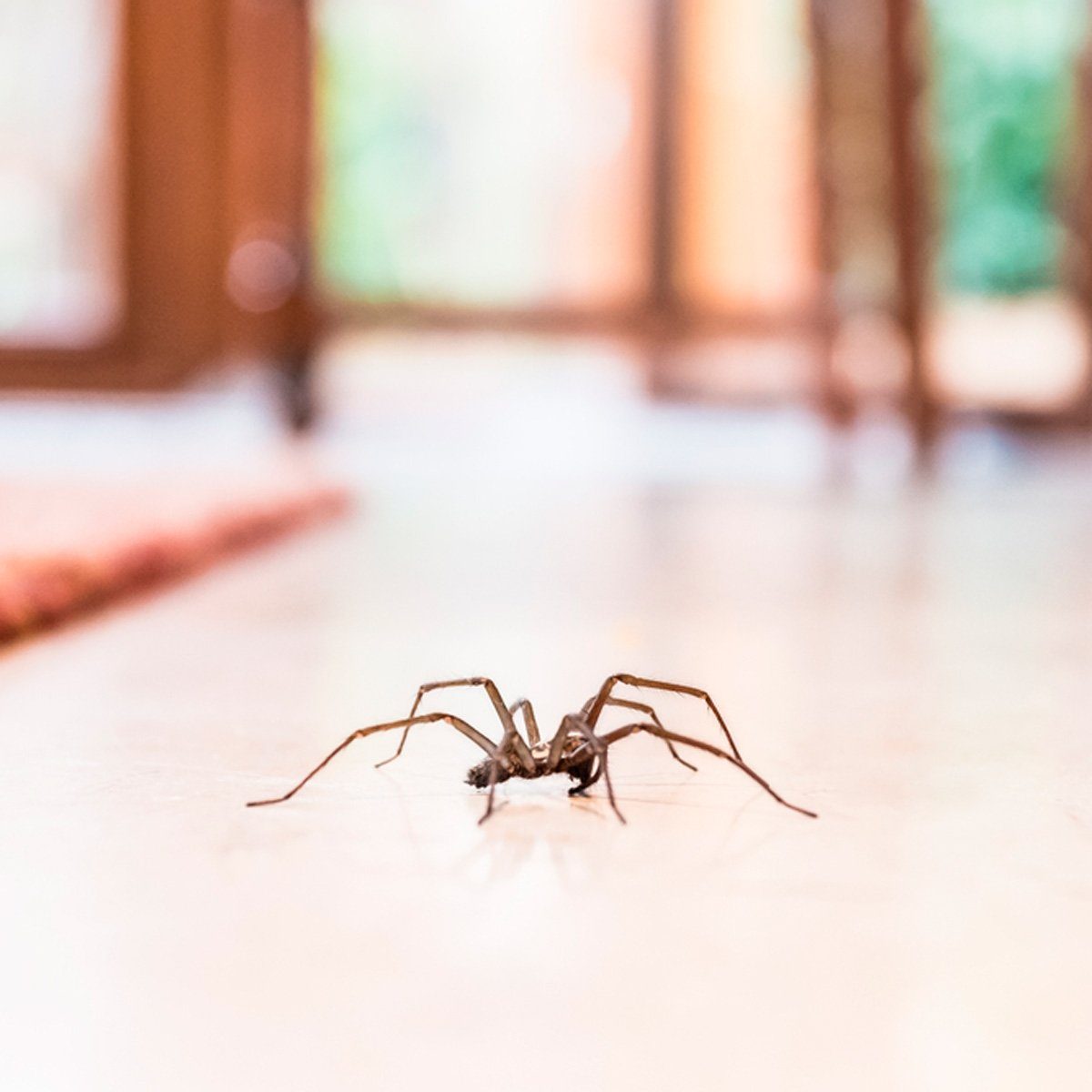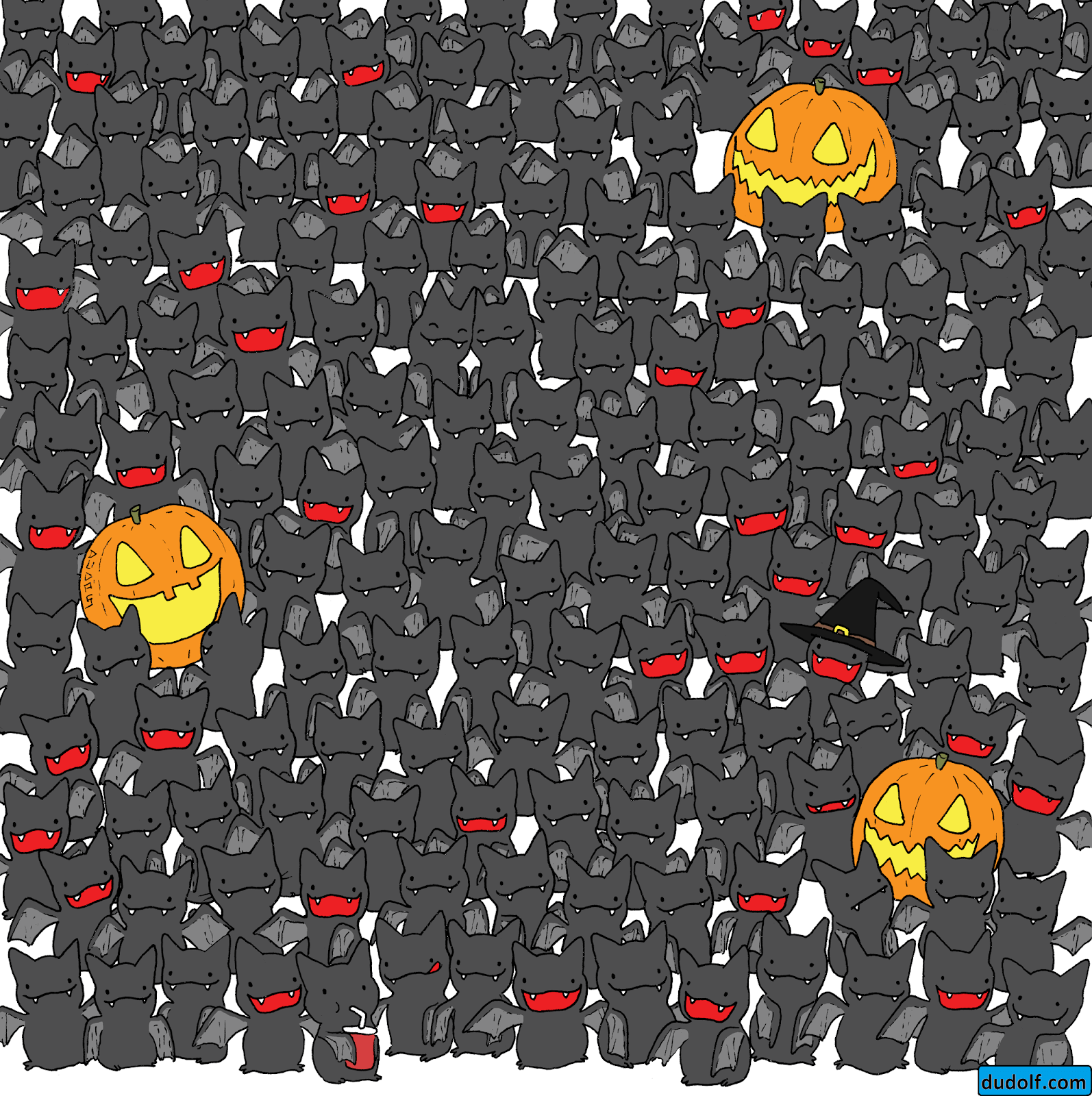
Let’s be honest: Vacations aren’t always relaxing, especially if you’re flying. Between long layovers, flight delays, and cancelled trips, it’s amazing that we reach our destination at all. But we’ve got one airplane-related quandary that doesn’t have any real-world consequences and won’t derail your travel plans. Can you find the airplane that doesn’t belong in this image of a busy air traffic map? If you can find the cat hidden in this photo, then you can probably find the one different airplane in this image.
Hold on tight—you can’t just “wing” this tricky task. Airport Parking and Hotels has created a brainteaser that might leave you scratching your head. In it, they ask you to scour the scene for one plane that is flying in the opposite direction of the others on its flight path.
“This is a tricky puzzle, but the airplane is in there somewhere,” Nick Caunter, a spokesman for Airport Parking and Hotels, said. “Thankfully, catching the right flight in real life is usually a little easier.”
If you’re struggling to spot the rogue aircraft, don’t beat yourself up. The airport company has provided the solution for anyone with their head in the clouds.
Was this puzzle too easy for your nimble noggin? We challenge you to spot the animals camouflaged in these photos, too!
Can a cookbook improve civilization? In this case, yes. Joy of Cooking has sold more than 20 million copies since Irma S. Rombauer, a St. Louis widower, self-published the first edition in 1931. It’s often called the bible of American cooking—though its influence and the range of recipes it contains reaches far beyond the U.S. The secret to its success is how Rombauer, unlike most cookbook authors of her time, wrote in a friendly, unintimidating manner, and gave advice that’d be useful to first-time and experienced cooks alike. It didn’t hurt that the book included fail-proof recipes for cherry pie, holiday turkey and a stiff bloody Mary, among many others.
When a book is that popular, and that well-loved, any change to it can cause an uproar. For the 20 million people who own the book, it’s like a best friend. They usually fondly refer to it as “The Joy.”
Now there’s a new edition, only the 9th time the cookbook has been updated. This one is the biggest yet, with more than 4,000 recipes. Here’s what you need to know about the new Joy.
What’s changed?
Nearly everything. The authors have added more than 600 new recipes and they’ve also retested and revised everything else. With each new edition of Joy, their aim has been to ensure it remains relevant to today’s home cook—since tastes, and what we want to cook, seems to evolve faster with every passing decade. The newest additions include everything from appetizers like fritto misto to pastries like kouign amann to gluten-free breads to a detailed section on how to prepare trendy spice blends like dukkah, sichuan pepper salt and za’atar. Even the instructional illustrations have been updated (now 3D representations rather than the much simpler line drawings of before).
What hasn’t changed?
The recipes are still written in the style—an innovation of Rombauer’s—that’s known as the “action method”: instructions are written out like a story, with a beginning, middle and end, and ingredients are listed at the point you need them, instead of at the top of the page. And those classics are all still here, including that cherry pie. That said, the new recipe begins with the more contemporary disclaimer “This cherry pie is so good it’ll kill ya,” some of the measurements have been tinkered with (part of the process of refining and re-testing each recipe), and they notably omit the 1 to 2 drops of red food colouring recommended in earlier editions, which only seemed necessary if your aim was a lurid Twin Peaks-style diner pie.
Wait, wouldn’t Irma S. Rombauer be 142 years old by now? Who is updating this thing?
That’s right—she published the first edition when she was 52, and passed away in 1962. But the book stayed in the family, with subsequent editions revised by her daughter, Marion Rombauer Becker, then by her grandson, Ethan Becker. This new edition was prepared by Ethan’s son John, and John’s wife Megan Scott.
Is it true they’ve revived the recipe for squirrel?
Yes! The instructions for small game (squirrel, raccoon, beaver and the like) disappeared in late 20th century updates, but lived on in urban legend, especially for a particularly graphic illustration in early editions of how to skin a squirrel (it involved holding down one limb with your foot). John Becker and Megan Scott have reintroduced the tips on how to prepare small game but left out the illustrations. (Can’t imagine eating squirrel in 2019? Check out these popular foods that people hated eating 100 years ago.)
Should I buy it?
Absolutely yes. The classic recipes are considered essential for a reason, and the new additions are soon-to-be-classics. This is the most multicultural of the Joys ever published, and you’ll find it very handy no matter what your ethnic background or culinary skills. For one, the recipe for Quebec-style tourtiere, redolent of clove and nutmeg, is first-rate. Order your copy of the new Joy of Cooking here.
Next, check out 50 cooking secrets chefs won’t tell you.

How to keep spiders out for good
The last thing you want to see when you turn on the light in the bathroom late at night is a spider in the middle of the floor. Also, it can make your skin crawl to watch one scurry across the bedroom floor and hide under a dresser before you can get to it.
If there’s one spider, that means there are plenty more. That’s not such a bad thing as spiders kill other pests in your home, but that doesn’t necessarily mean you want them anywhere near you.
There is an easy solution to repel spiders in areas of the home where you don’t want them, and that solution is: hedge apples! The natural chemicals in this funky-looking fruit of the Osage orange tree are believed to deter spiders.
When using hedge apples as a spider repellent, just make sure they are placed in areas where pets and family members can’t get at them.
Simply place a few hedge apples in areas where you want to repel spiders such as in the dark corners of your unfinished basement, in the attic or in your backyard shed.
Here are the pests that could be hiding in your attic.

How to Make the Best Microwave Popcorn (Without Using the Popcorn Button)
Anyone who has ever had a kitchen can most likely sing the praises of the microwave. You can have a ready-to-eat meal with the push of a couple buttons (and potentially a towel or oven mitt to remove the sometimes scorching hot tableware). And some of those buttons are even labelled specifically with the oft-microwaved food they’re designed to cook. They’re supposed to make your life easier—just press the button that corresponds with the food you’re cooking and call it a day.
But sometimes they’re not actually the best amount of time to cook those foods, and this is especially true when it comes to the popcorn button. Chances are your popcorn button does not give the correct amount of time for cooking popcorn. Microwaves do vary, but your popcorn button probably runs the microwave for around two minutes and 30 seconds or a little less. And the general consensus is that this is way too long to cook your popcorn.
So how long do you microwave popcorn? Don’t use the microwave—use the popcorn. “Read the package of the popcorn to see the time that is required to cook it,” suggests Becky Beach, a food and lifestyle expert/blogger. “Each brand of popcorn is different, so pay close attention.” Some popcorn brands’ instructions won’t even give you a time but will instead say to listen for the “pops.” A good guideline is usually that your popcorn is done when there’s a two- to three-second delay between “pops.” If you let your popcorn cook until the microwave’s popcorn timer runs out, you’ll probably end up with burnt popcorn.
So why are microwaves’ popcorn buttons set to the wrong time? Well, it’s not necessarily the “wrong” time. Again, every bag of popcorn is a little different, and two-and-a-half minutes can be the right amount for a large bag of popcorn. If anything, it’s pretty much a guarantee that your popcorn will, indeed, be done by the end of that time. (Probably overdone.) But, again, the actual time depends on the brand; Beach says that “the 100-calorie Smart Pop bags of popcorn, for instance, are very small and only need up to two minutes to cook.”
Another reason to trust the bag of popcorn instead of the microwave? “Most microwaves have a preset time programmed into the popcorn button and can’t detect humidity,” Beach explains. “Very few microwaves have a sensor that detects it so that the popcorn won’t burn.” She recommends peeking at your microwave’s manual to see if it detects humidity. And even if it does, you’ll probably get more perfectly cooked popcorn if you follow the package guidelines. Now that you know to leave the popcorn button be, find out more microwave tricks every cook needs to know.

There Are More Than 40 Different Types of Epileptic Seizures
Epilepsy is a condition that is often misunderstood. Although many people have come to believe that all epileptic attacks involve a violent seizure—with the person falling to the ground and convulsing—the neurological disease actually takes many different forms.
Ley Sander, medical director of the U.K.’s Epilepsy Society and professor of neurology at University College London, says that though these “tonic-clonic” seizures—formerly referred to as “grand mal”—are indeed common, there are others. “In fact, there are over 40 different types of epileptic seizures,” he adds, which include ones where a person stares blankly and doesn’t respond when someone is talking to them, and others that cause the muscles to contract so the body becomes rigid.
Epileptic seizures occur when electrical signals in the brain malfunction, and they fall under two broad categories: generalized, which involve the entire brain, or focal, which affect only part of the organ. While some people experience only one seizure in their lifetime, which can be triggered by a brain illness, stroke or tumour, at least two seizures not linked to these health issues are generally required for an epilepsy diagnosis.
Fifty million people worldwide have epilepsy, and the condition can affect anyone—particularly when it runs in the family. Children will sometimes outgrow it, but for those who continue to have seizures into adulthood, there are treatments and medications to minimize its impact.
“For two thirds of people with epilepsy, their seizures will be controlled by medication,” says Sander, explaining that there are more than two dozen drugs for the condition, with newer ones having fewer side effects. In cases where the patient fails to respond to treatment, and the area of the brain responsible for the seizures can be identified, surgery can be performed. “We have pioneered functional MRI at Epilepsy Society to accurately map the brain in order to guide safer surgery,” says Sander. Seventy per cent of those who have surgery, which often involves the removal of a portion of the temporal lobe of the brain, become seizure-free, while 20 per cent find their seizures are reduced; for 10 per cent, there is no improvement.
Patients with severe epilepsy may benefit from a vagus nerve stimulator implant, says Sander. Like a pacemaker that regulates the heart’s rhythm, this device, which is placed in the neck, can deliver mild pulses of electricity to prevent epileptic seizures when they are coming on.
What Sander finds most promising, though, is the use of whole genome sequencing in treating epilepsy. “Although this is still in its infancy, we are beginning to pinpoint areas of our DNA that contribute to epilepsy and which ones may then indicate a different course of medication, particularly for people with some of the most severe cases,” he says.
The good news is that many forms of epilepsy are treatable, says Sander, and lots of people with the condition lead normal lives. Often, they can control their epilepsy through lifestyle modifications, whether that’s avoiding alcohol or minimizing triggers such as stress and sleep deprivation. (Follow these daily habits for a better night’s sleep.)
If you witness a convulsive epileptic seizure, he suggests you “calm, cushion and call”—relax the person using a gentle voice, support their head with your hands or a piece of clothing, and phone for help if the seizure lasts more than five minutes.
Next, find out how epilepsy could be treated with medical marijuana.

The Optical Illusion That’s Taking the Internet By Storm
Every time we start feeling confident that our powerful human brains totally have it together, along comes a visual illusion that makes us question our very sanity. For instance, this image (above) created by illusion artist Victoria Skye is boggling the Internet’s collective mind.
Do those horizontal blue stripes look like they’re diagonal, tilting upwards and downwards? It certainly looks that way to us.
But when the image is blurred, you can quickly see the truth…

Yup! All of those lines, both horizontal and vertical, are as straight and parallel as a checkerboard. That’s the exact same image, just much blurrier! Check out this animation, in which the image gets gradually blurrier, for proof.
Don’t worry—you’re not the only one baffled by this head-scratcher. One Twitter user didn’t believe it until he measured the vertical space between the bars, and another had to put the image in Illustrator to verify that the lines were indeed straight. The artist herself, Victoria Skye, even admitted, “I created it and it still fools me.”
So what is it about this image that tricks our eyes so much? Well, it’s based on a well-known optical illusion called the “Café Wall,” so called because of a real café wall in Bristol. Turns out England is quite the hub for optical illusions; London is even using them to curtail speeding. The illusion comes from a combination of the “colours, angles and edges,” says Skye. And those tricky little diamonds in the corners don’t help matters. It has to do with the way our eyes see light and dark colours. “That’s why, if you blur the image, the effect disappears,” Skye explains. “Because you cannot resolve the tiny white-black interactions once they are blurred, so the brain is no longer led down the garden path.” Take a break from analyzing this illusion to see if you can solve these challenging trivia questions instead.
[Source: boingboing.net, telegraph.co.uk, metro.co.uk]

Is this the saddest movie scene of all time?
What’s the funniest movie of all time? How about the scariest movie? The saddest? You probably have your own set of answers to all of these questions, forged over years of debate with friends and first dates, tempered in bottomless cups of coffee and wine. There is no wrong answer; defining our own emotional extremes is one of those uniquely human impulses, like playing air guitar, that we must all experience but in our own special way.
But according to science—specifically, University of California, Berkeley researchers Robert Levenson and James Gross—that doesn’t mean there isn’t a right answer to these questions. There is, in fact, a scientifically verified saddest movie of all time. It’s called The Champ (1979), and it is heartrending. But before we get into that, you may wonder how (and why) science weighed in on this.
Behaviour researchers need to be able to manipulate their subjects’ emotions for a lot of reasons. So in 1988, Gross and Levenson set out to find the be-all-end-all of emotion-altering films across seven categories: Amusement, anger, contentment, disgust, fear, sadness, and surprise.
As anyone who has ever debated movie merits with friends will understand, these are not questions that are easily answered. After years of narrowing down a list of films suggested by colleagues, film critics, video store employees and the like, Levenson and Gross put 76 clips before an audience of 500 male and female students in 1995. Students recorded how each clip made their moods shift according to the seven feelings mentioned above, giving the researchers raw data on the relative emotional power of each film on their list.
On the happy end of the spectrum, eight minutes of Robin Williams doing stand-up produced the highest amusement, followed closely by the fabled diner scene from When Harry Met Sally. Footage of waves on the beach rated highest for contentment, and the climactic basement sequence from The Silence of The Lambs nibbled out a win over a creepy hallway scene from The Shining as most fear-inducing film. (Discover the reason why you hate scary movies.) When it came to tearjerkers, the notorious death of Bambi’s mom shot to the top of the list, but was beaten out by one other clip. And that brings us to The Champ.
For those who have not seen The Champ, here’s the upshot: A washed-up boxer (Jon Voight) gets back in the ring to try and win a better future for his son (nine-year-old Ricky Schroder). In a climactic upset, the boxer wins the big match and becomes The Champ yet again—only to die in his dressing room immediately after. His son’s emotional (and Golden Globe-winning) breakdown that follows is what Gross and Levenson discovered to be the definition of sad cinema, a scene so tear-jerking it has since become the scientific standard for bumming people out and been screened in more than 300 studies (and cited in more than 4,000 Google Scholar pages) for that purpose. If you are saying to yourself, “enough blabbering, show me the blubbering,” here’s the scene.
If you are not affected by that, you are a scientific anomaly and should submit yourself for further study.
Look for The Champ in ongoing sadness studies near you, and enjoy the rest of Gross and Levenson’s most-emotional films list below.
- Amusement: When Harry Met Sally and Robin Williams’ stand-up
- Anger: My Bodyguard and Cry Freedom
- Contentment: Footage of waves and a beach scene
- Disgust: Pink Flamingos and an amputation scene
- Fear: The Shining and The Silence of the Lambs
- Sadness: The Champ and Bambi
- Surprise: Capricorn One and Sea of Love
Next, can you name the romantic movies in this picture?

The Magic of Restaurant le Louis-Hébert
In October 2017, my sister Gail and I took a Great Canadian Bus Tour to Quebec City for Thanksgiving weekend. We chose to spend the afternoon of Thanksgiving day itself in the Old City. We wanted to have an authentic, memorable meal for Thanksgiving, so we wandered up and down the Grande Allée checking out all the restaurant options until a waiter invited us to enter Restaurant le Louis-Hébert. It was a magical place.
Stepping through an ornate iron gate into a cobbled courtyard filled with autumn flowers, a stone path led us to a heavy wooden door that creaked with age as we stepped into an inviting low-ceilinged room. The stone walls were two feet thick, and the wide-planked floor shone with years of loving care. The tin ceiling reflected the glow of candlelight onto the huge timber beams.
Four handsome young men dressed in formal black pants and shirts with matching vests greeted us with smiles and expressions of welcome as we were whisked to a table by the window. The windowsill was wide enough to be a seat and the multi-paned casements were folded back into the room, allowing a soft warm breeze to mingle with the dizzying aromas wafting from the kitchen. The candlelight seemed to flicker in time to the softly playing music.

The deep red of the Cabernet matched the colour of the tablecloth as I settled a starched linen napkin over my lap. The bowl of golden-coloured soup placed before me was pure ambrosia. My empty bowl was replaced with a plate featuring delicate beef medallions smothered in a succulent, peppery sauce, along with crisp, allumette-cut potatoes. The arugula salad was dressed in a piquant vinaigrette that made my taste buds dance.
As the mist turned into fog outside the window, I took a sip of water to cleanse my palate and picked up a silver teaspoon to enjoy dessert—crème brûlée. I gently broke through the caramelized top to the cloud of golden custard beneath. Taking a last nibble of the delicious dessert, and a final sip of coffee, I reluctantly gave up my seat to waiting diners before returning to the misty street—and the present day.
Next, check out the 10 most iconic Canadian dishes—and the best places to have them.

Get the lowest flight prices
Switch over to incognito mode on your computer, and airlines, hotels, and others will be unable to track your every Internet move. Translation: you’ll essentially be online anonymously. Here are all the ways that browsing incognito will improve your travels and your life—and everything you need to know about how “private” is private mode.
When you’re searching in incognito mode, the airlines and third-party sellers have considerably less digital footprint to trigger their algorithms that find opportunities to increase the prices. So if you’re searching regularly for a flight, the site knows you’re interested and it will raise the prices slightly the next time you return. Not so if you’re searching incognito. “Incognito prevents the disclosure of the user’s purchasing intentions,” says Sofia Scott from Trip Trip Now in Barcelona. Since the big machines can’t read you purchasing intentions accurately, you can compare the prices of the flights, and return to the lowest one without worrying that the airline raised its price knowing you were interested. Want to save even bigger? Try these cheap alternatives to expensive European cities.
Plan a surprise trip
If you share the same computer as your partner, he or she may see your browsing history, and this will ruin the surprise, says Flavio Serreti, manager of Soprano Villas. Browse and purchase incognito, and there will be no record of your devious surprise trip.
Get rid of the annoying pop-up ads
Those pop-up retargeting ads can also be a spoilsport if you’re planning a surprise trip, Serreti says. They can also simply be annoying because pop-up ads tend to be annoying. You won’t have to worry about recurring ads if you’re in incognito mode, because when you return to regular browsing mode, the sites won’t connect you with your former, incognito self.
Discover low-priced hotels
You get can slightly lower rates using incognito mode when searching for hotels on an aggregator site, says Chris Tweten, marketing director at BodegaHostels. However, there is one exception, he says. “If a hotel is in its first month or so listed on an aggregator (Booking.com in particular) then it’s cheaper to do the same search twice without incognito,” Tweten says. “Both search engines favour newer listings and reward people for coming back to book.” While you’re looking to save money on those hotels, make sure you know the most expensive American cities to book a hotel in.
Search for lower-priced trains, buses, and any other e-commerce sites
Since searching incognito doesn’t store your cookies, the site’s data and the footprints, the algorithm for the train’s sites, the buses, and for all other e-commerce won’t recognize that you had already been searching there. “Hence, it will give you the best, lowest rate possible,” says Ryazan Tristram, travel blogger with Everything Zany, based in Worcestershire, United Kingdom.
Find out why it pays to read the fine print when you travel.

During the Halloween season, you can never be too sure about what might be hiding in the shadows. Is it a ghost? A goblin? Or a black cat? Luckily, this drawing by Hungarian illustrator Gergely Dudás is more sweet than spooky, but it is hiding something. Can you see where the little black cat is hiding among all of the bats?
Have you found it yet? Hint: the cat is the same colour as the bats but it doesn’t have any wings. If you’ve already found the little feline and are ready for another puzzle, see if you can find the owls hidden in these photos.
If you’ve given up or want to check if you’re correct, you can find the solution here. You can find the cat by counting in three bats from left to right in the bottom row. The cat is touching the right ear of the third bat in. It looks like it has wings because the two bats next to the cat have their wings on top of it, but don’t be fooled, it’s the cat.
If you think you’re a pro at these puzzles, or just want to do more of them, the creator of this puzzle, Gergely Dudás actually has a whole book of them. It’s called, Bear’s Spooky Book of Hidden Things: Halloween Seek-and-Find, and you can get in on Amazon for under $10. Dudás also has a Christmas themed puzzle book if you prefer to find festive things.
If you think you have a knack for finding hidden animals, see if you can spot the animals camouflaged in these pictures.